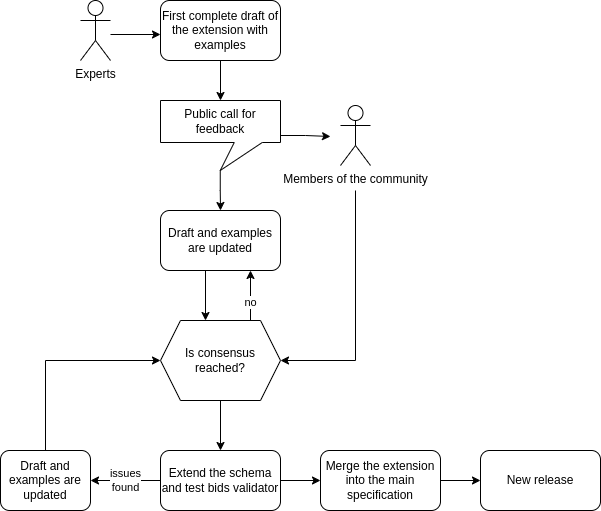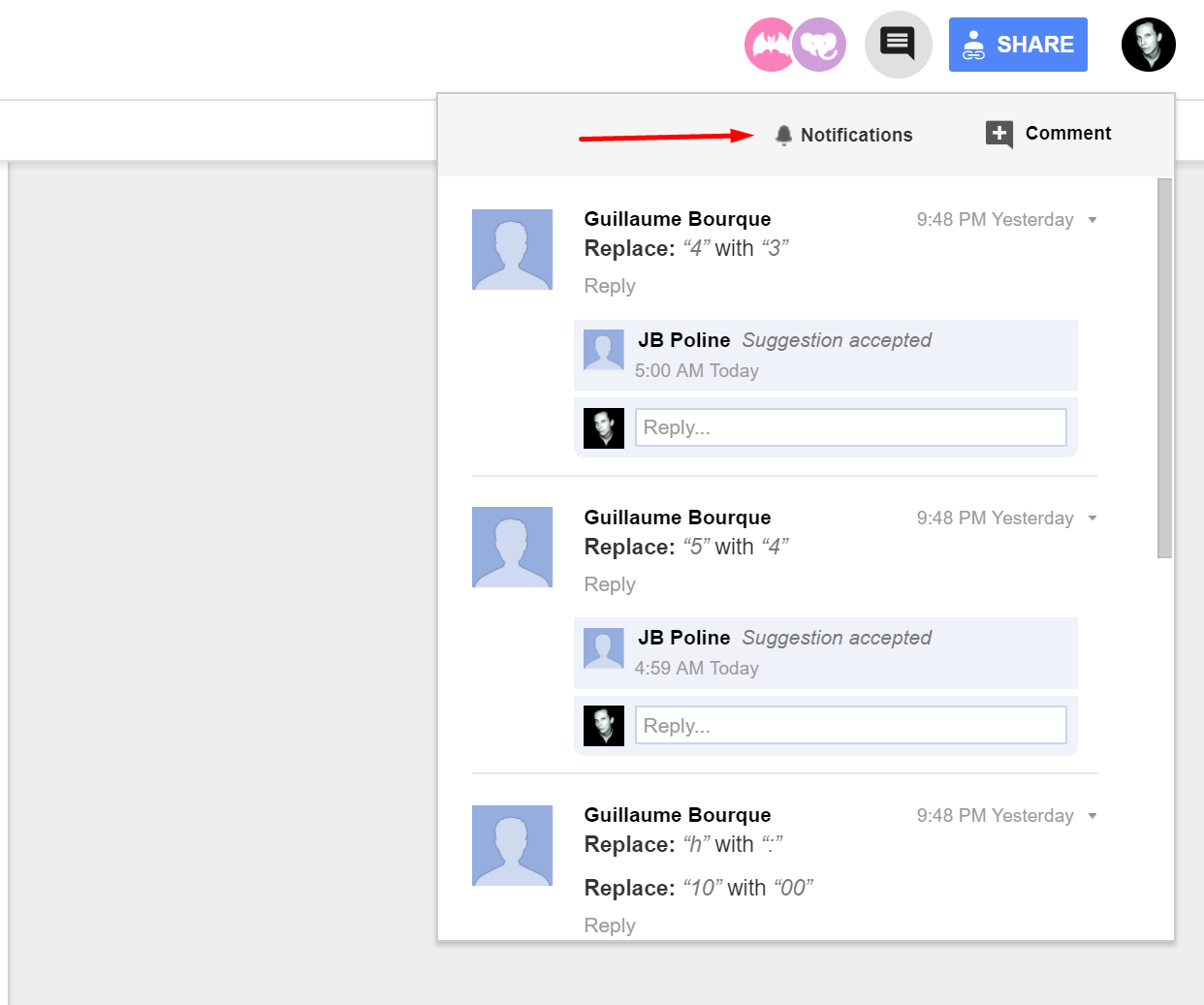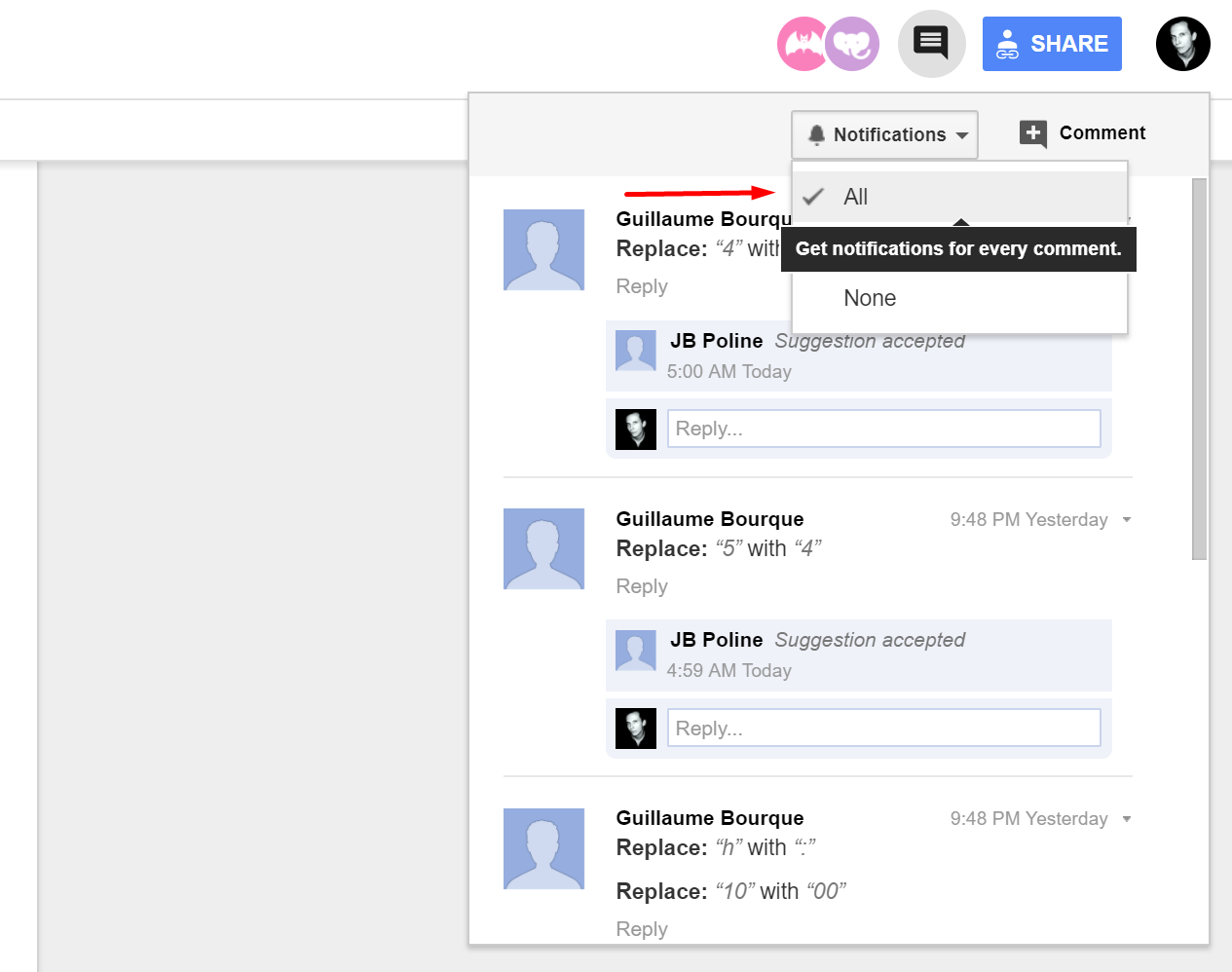What are BIDS Extension Proposals?
A BEP is a method of expanding the BIDS Specification to encompass new features or data types.
They are called BEPs because they are modeled after Python Extension Proposals (PEPs) as they have been an effective community tool to change (either by updating or supplementing) the Python programming language. BIDS contributors adopting a similar structure has been useful to expand BIDS.
BEPs have grown the specification beyond its original scope of MRI to new techniques, and file types and descriptors. A list of completed BEPS can be seen here and a list of proposed/ongoing BEPs can be found here
Why contribute to BIDS?
You can make something that is good even better without building it from scratch.
You can interact with and get to know other experts in the field.
A more substantial extension can lead to standalone publications, as evidenced by abundant examples.
Overarching principles in the design of BIDS
The directory structure must not only be machine-readable but also easy to interpret by humans. Readability is as important as the ability to programmatically traverse the directory structure.
When it comes to file names within directories, redundancy trumps conciseness, so the files should be identifiable by their names even if removed from the directory structure.
If something being added to BIDS is applicable to at least 80% of use cases that is a very good start and should be added to the specification by either opening a GitHub Issue here or by working on a BEP following the submission process.
When and how to start a BIDS Extension Proposal?
Small contributions (typos, rephrasing of a description, adding a single new metadata field) can be just added as a Pull Request on GitHub
Larger contributions that are expected to involve longer and more involved discussions should be first described in a standalone document: a Google Docs BEP. Development on Google Docs is preferred as this is a low barrier to entry for colleagues who do not use GitHub and/or Markdown, allowing more people to get involved.
-
Explore the specification and the BEP lists to find existing or ongoing efforts that may support what you are trying to add into the BIDS Specification. Someone may have already done work for you.
-
Read the BIDS governance document.
-
Familiarize yourself with the BIDS community by browsing current issues, discussions, and proposed changes on the BIDS specification repository. Search for issues relating to your feature or BEP idea before creating a new issue.
-
Open an initial “issue” on the BIDS specification repository issues page to gauge interest in your potential BEP, and to collect feedback by more community members and BIDS maintainers. This is an important step before proceeding in order to make sure that more consensus arises and more contributors are aware what is happening.
-
Communicate with the BIDS maintainers to make your BEP official. This entails registering the BEP with a number on the BIDS website. To obtain a number for your BEP, follow the previous steps and then open a new issue or submit a pull request to the website GitHub repository, cross-linking to any other already existing issues.
-
Create a draft of your extension by discussing among colleagues. The BIDS Extension Proposal template provides some boilerplate and formatting conventions.
-
List on the draft the contributor(s) leading the effort.
-
Share the draft (remember to share a link that allows anyone to comment) with the bids-discussion mailing list and ask for comments.
-
Incorporate the feedback and strive for consensus.
-
Help to merge the extension into the main specification (this will require converting the proposal to Markdown and submitting a Pull Request at the BIDS specification repository)
-
Create example datasets.
-
If necessary, contribute a pull request to the BIDS Validator repository as well to incorporate the extension.

Advice for extending BIDS
Limit flexibility, consider tool developers
One of the aims of BIDS is to make reusing data easier. This means that when proposing an extension you need to put yourself in the shoes of someone who will receive a BIDS dataset and attempt to analyze it. Additionally, consider developers that will try to write tools that take BIDS datasets as inputs. It is worth assessing how much additional code different ways of approaching your extension may cause.
The most common situation where the trade-off between flexibility and ease of tool building comes up is in choosing file formats. For example, allowing multiple different file formats to be used to represent the same data type is flexible, but requires developers to provide support for all of them. As an example, iEEG-BIDS and EEG-BIDS surveyed the community to find out about most common formats and selected only a few formats based on usage and their openness.
Get the community involved
Try to reach out to colleagues working with the type of data you are trying to add support for. The more people looking at your extension the better it will become through discussions.
Be consistent with the main specification
The main specification follows some general rules. For example, see the rules on participant labels.
Try not to deviate from BIDS conventions in your extension.
Be consistent with other BEPs
A common dictionary (BIDS keys) is what makes BIDS successful, it is thus essential to not create many new entities. Many of the current BEPs have developed useful terms that we recommend here:
| Entity | BEP(s) | Description |
|---|---|---|
| desc- | BEP003 (merged) | Alphanumeric label, for any use, up to pipelines to determine what are valuable, for example, Common desc acronyms: lp30: low pass filtered at 30 Hz hp05: high-pass filtered at 0.5 Hz reref: re-references to another electrodemc: motion corrected sm: smoothed pvc: partial volume corrected McPvc: motion and partial volume corrected Note: concatenation of the above is possible, preferable in the order in which they were applied when applicable: e.g. McPvc, RerefLp30. PascalCase is recommended when concatenating descriptions |
| space- | BEP003 (merged) | Name of space file is aligned to (standard or non-standard) |
| res- | BEP003 (merged) | Identifier for spatial resolution (details in sidecar) |
| den- | BEP003 (merged) | Identifier for mesh density (details in sidecar) |
| label- | BEP003 (merged) | Label of ROI described by mask file |
| hemi-{L|R} | BEP011 | File describes left or right hemibrain |
| model- | BEP016, BEP039 | Name of model generating derivative file |
| param- | BEP016, BEP039 | Name of parameter represented by file |
| seg- | Changing the current derivatives | As per current atlas definition a label the user MAY use to distinguish a different segmentations, e.g. atlas/atlas-DKT_space-FSaverage.nii sub-01/sub-01_space-T1_seg-DKT_dseg.nii (are there current uses of the ‘atlas’ key that would be broken changing to ‘seg’?) |
| atlas- | BEP003, BEP038 | Atlas is defined as per Merrian-Webster, a bound collection of maps (i.e. labeled brain regions) and metadata (tables, or textual matter) e.g. atlas-x_space-MNI305_ext or atlas-DKT_ext |
| group- | BEP039 | Name of group combining over subjects |
| node- | No BEP (BEP-002 working implementation) | Name of processing node generating derivative file |
| stat- | BEP016 (contemplated but not currently present in proposal), also useful for atlas BEP38 | The theory was that one could e.g. compute the mean value across all values in a time series, or within a DWI shell, or the like. The particular aggregate statistic may not be an adequate descriptor; you could also need eg. the axis along which the aggregate was applied, which elements were or were not included in the aggregate, etc.. So it might be too much complexity to hand to a single entity? |
| meas- | BEP017,BEP23 | Description of the quantity described by the file when the suffix is insufficient (eg. binding value, relaxation time) |
Derivatives BEP and provenance
The objective of BIDS is to promote data sharing, ensuring that the information is easily accessible and reusable. For this purpose, it is highly recommended to provide comprehensive provenance information to ensure transparency and traceability. While full provenance can be used for full reproducibility, it is not a pre-requirement. A suggested approach to developing the BEP involves envisioning each processing step, including potential file names and JSON structures. While this exercise might not precisely depict the eventual output files and JSON configurations, it's instrumental in capturing provenance and identifying what files or information should be retained for optimal reuse in future studies.
What is provenance?: Provenance is information about how the dataset was processed.
What BIDS-Prov (BEP28) is about and which metadata can/should go in my BIDS-derivative BEP?: The important question to ask for each metadata is whether this metadata is important to enable reusability (for consistent interpretation that is relevant for further processing). If so, this metadata must go into the BIDS-derivatives.
Should I worry that those are already covered by the BIDS-Prov BEP?: No. This information is complementary.
How do I know if the metadata I want to store should be put in the BIDS-derivatives BEP or in a JSON-LD file?: It will never go in JSON-LD. BIDS-derivatives and BIDS-Prov are superpositions, they are non-overlapping. You don't have to include BIDS-Prov.
If I don’t use BIDS-Prov how can I describe the data workflow? A lightweight version is to use a description.tsv file (see common derivatives)
Avoid backward incompatible changes
BIDS is already incorporated in many tools - proposing a change that will render already released BIDS datasets not BIDS-compliant will cause a lot of confusion and will force developers to update their code. We should strive to avoid such situations.
Having said that, one day we will have to break backwards compatibility. If you have an idea for a backwards-incompatible change please add it as an issue to the BIDS 2.0 GitHub repository.
Use existing and common practices/formats
It’s likely that certain data types are commonly stored in a particular way in your sub-field. If this is the case try adopting this way unless it makes your extension too inconsistent with the main specification. A good example of such adoption is the bvec/bval file format for storing diffusion metadata.
Try to link with other existing standards and ontologies
There are many standardization attempts out there. When proposing your extension consider gathering inspiration and directly linking to other standards. A good example of this is linking metadata fields to corresponding DICOM tags.
Common pitfalls
Relying on merging the extension on a set timeline
We have found it is very difficult to predict how long a BEP will take to merge into the standard. One challenge that has occurred in the past is a doctoral student requiring acceptance of their work as a requirement for graduation. We do not recommend yoking contributions to the BIDS community (or any volunteer-led open source community) to strict timelines to avoid the uncertainty around domain-specific community engagement, feedback from other BIDS contributors, and responding to reviews.
Not considering domain- or field-specific guidelines
In many neuroscience fields there have been past developments and efforts to implement standards, either formally or informally. If possible, BEPs should embrace these rather than trying to come up with alternative standards. The BEP should therefore inventorize and review past and existing work that may be relevant to the BEP.
Not considering DICOM fields
Many of the modalities we use have an associated standard, like DICOM for instance.
While BIDS is not specifically about data format, a lot of metadata information are
stored in data files and there is rarely a good reason for using a different name
than one from other established standards. In using DICOM it is reasonable to
check what DICOM has already developed and see
if there is overlap. In a similar fashion, when relevant, we recommend having a
sourcedata/ directory in example datasets to include DICOM files.
You can delete the data and keep the header, removing any
personally identifying information,
also known as PII or "Personal Data" under the
General Data Protection Regulation (GDPR).
Not building up a user community to support the BEP
Merging BEPs only happens following a community review. It is therefore helpful to get the stakeholders on board early (i.e. while writing the BEP) rather than at the review stage. Diversity in the team contributes to the quality of the extension proposal. We recommend that the core team has representatives from 3 different labs, preferably also with a mix of more junior and more senior contributors. You may also consider requesting explicit support letters from external labs.
How to turn on email notifications about suggestions and comments for Google Docs


